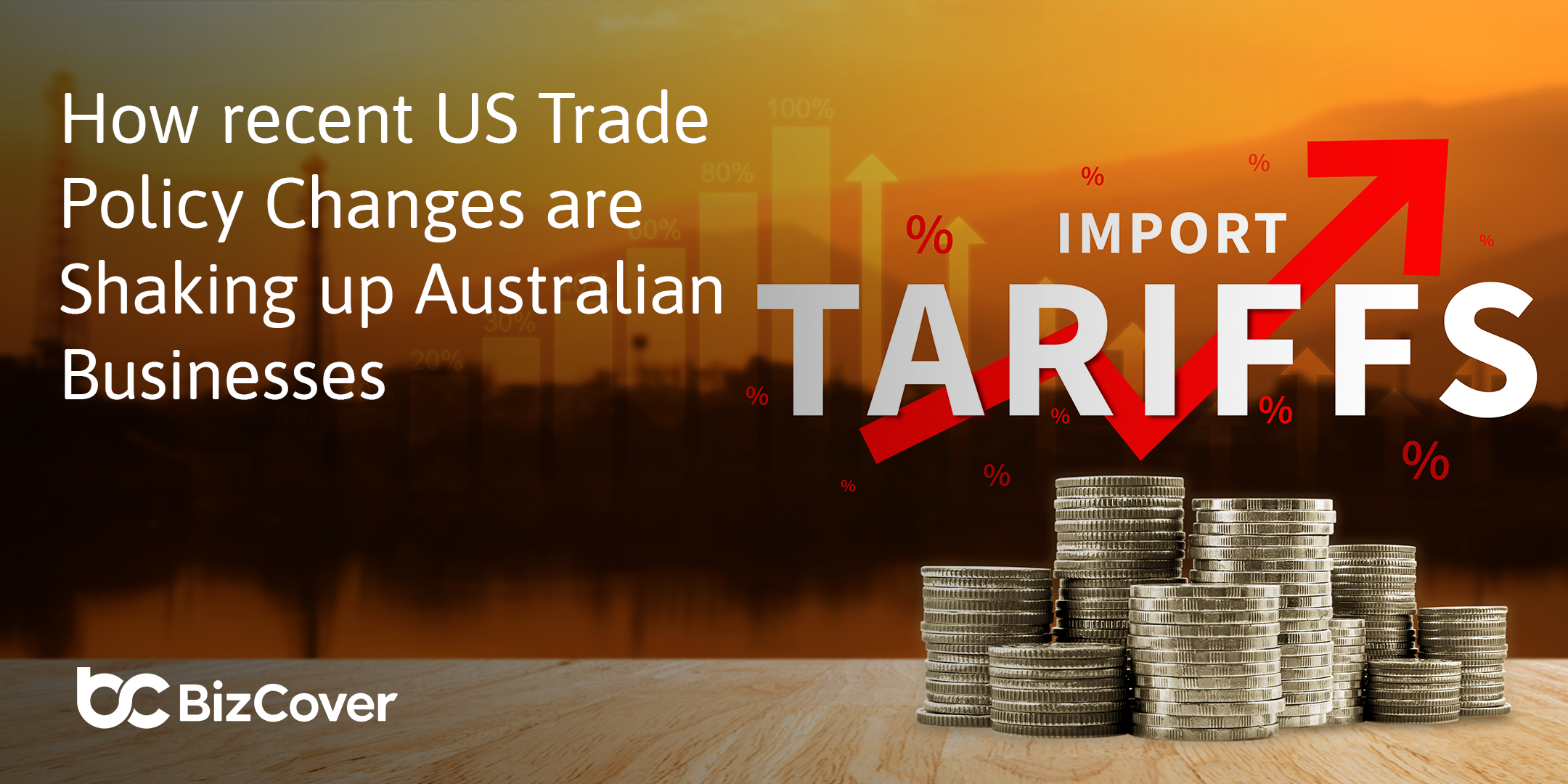What is Vendor Risk and Why is it Important?
When you run your own small business, you likely rely on a number of external vendors to help keep things running smoothly. This could include everything from suppliers delivering stock to an outsourced company managing your website. These vendor relationships are important, and can help you save time and money. However, they do also come with risks, especially when it comes to cybersecurity.
What is vendor risk and why should small business owners care?
Vendor risks are the potential problems that could arise from depending on third-party businesses to support operations. Every small business owner should be aware of the risks associated with working with third-party companies in order to better prepare for potential issues.
Examples of vendor risks
No matter what kind of industry you’re in, working with vendors means there is the potential for risks. A few common examples of vendor risks include the following:
- A supplier fails to deliver products on time.
- A software provider suffers a data breach.
- A service provider goes out of business.
- A cloud storage service experiences an outage.
- A vendor mishandles sensitive client data.
How vendor risk can impact your business
Working with third parties is often not just a way to better manage your own business operations; it’s often a necessary part of running a business. This is why it’s important to understand vendor risk and how it can affect your business, like the following examples:
- Lost revenue: If a vendor lets you down and it affects your ability to deliver products or services, you could miss out on valuable income.
- Damaged reputation: Customers won’t always understand that a third party was responsible for the issue that’s impacting them. They’ll only remember that your business failed to deliver.
- Regulatory issues: If a vendor mishandles data or breaks compliance rules, your business could still face fines or legal trouble, especially when it comes to privacy and cybersecurity.
- Operational disruptions: From broken software to late shipments, vendor issues can slow you down, frustrate your team and cause unnecessary stress.

Managing vendor risk
Whether you’re looking to take on a new vendor or are reviewing your existing vendors, it’s important to assess possible risks. These steps can help to give you a good starting point.
Step 1: Identify your vendors
Start by creating a list of all your vendors, including software, hardware suppliers, logistics companies, freelance contractors, and everything in between.
Now, categorise them by importance. Think about how they would impact your business if you were to lose their services. Try starting with these three categories:
- Essential: Can’t operate without them.
- Important: Would disrupt operations.
- Low-impact: Would be inconvenient, but ultimately manageable.
Step 2: Assess the risks
After rating your vendors, assess what kinds of risk factors you might be looking at:
- Financial health: Is the vendor stable?
- Security practices: How do they protect your business’s data?
- Compliance: Does the vendor meet relevant regulations?
- Performance history: Have they demonstrated that they deliver on time and as promised?
If you can’t answer these questions yourself, try finding the answers online by looking at reviews from other customers. You can also check if the company has been in the news for anything.
Otherwise, you can go straight to the source and ask questions along the following lines:
- Can you share how you protect sensitive business or customer data?
- What contingency plans do you have in place in case of a service outage?
- How do you ensure your services remain compliant with current laws and industry standards?
- Can you provide references or case studies from other businesses like mine?
- What happens if your business experiences disruption – how would that affect us?
- You can also ask new vendors these questions when you’re vetting them.
Step 3: Establish clear agreements
If you haven’t done so already, it’s always a good idea to put vendor agreements in writing. A written contract helps ensure that everyone is on the same pages or there are no misunderstandings, assumptions or nasty surprises.
One key part of a vendor contract (especially for technology or service providers) is the Service Level Agreement, or SLA.
In simple terms, an SLA is a promise from your vendor about how they’ll deliver their service. It spells out expectations clearly so you know what you’re getting and what kind of performance you can count on.
Step 4: Manage performance regularly
To keep things running smoothly, it’s important to regularly check in on how your vendors are performing. This is an ongoing part of the relationship that can ensure your needs and expectations are still being met.
Depending on the vendor and what they offer, key metrics could include things like delivery times, system uptime, customer service response time or product/service quality.
You can also encourage active two-way communication with your vendors to foster a better working partnership. This can help to prevent misunderstandings and show your vendor that you value the relationship.
Step 5: Have a backup plan
No one wants to think about the worst-case scenario. But planning ahead can help you to avoid extended downtime, protect your reputation, and remain profitable.
Even with the best vendors and solid agreements in place, things can still go wrong. A supplier could have stock issues or a software platform might suddenly crash. That’s why it pays to always have a backup plan. Here are a few simple examples:
- Alternative suppliers: If your main product supplier can’t deliver, do you have a second or third option ready to go?
- Local data backups: If you rely on cloud-based tools, keep a local copy of important documents, customer info or financial records.
- Freelancer backups: If you work with a contractor, try to build relationships with a second person who can step in if needed.

Cybersecurity and vendor risk
Cybersecurity isn’t just something for big corporations to worry about. Cybercrime impacts any business in Australia that uses digital tools or handles data.
If your vendors becomes the victim of a cyber incident, then your business could also feel the impacts of this attack. That’s why understanding the link between vendor risk and cybersecurity is important when assessing third parties.
How does cybersecurity fit in with vendor risk?
When you think about vendor risk, don’t just think about whether a supplier will deliver on time or meet service expectations. You also need to consider cybersecurity.
If a vendor handles your data, connects to your systems, or provides cloud-based services, then a cyber issue on their end could quickly become a very serious problem for you.
With Australia’s updated privacy laws, businesses are expected to take reasonable steps to protect their clients’ data. In some contexts, this could also extend to properly vetting and monitoring vendors. So even if your business is not the one handling the tech side of things, you could still face consequences if the vendor breaches regulations.
What is a supply chain cyberattack?
A supply chain cyberattack is when a cybercriminal attacks a third-party vendor in order to access another business’s systems. Cybercriminals will target a vulnerable, less secure supplier and then gain access through them to separate organisations.
This is why it’s important to carefully vet vendors to ensure their cybersecurity measures are up to scratch. Otherwise, your business could become a cyberattack victim because of a third party’s lack of security.
In May this year, a well-known cybercriminal cartel targeted a managed service provider (MSP) and then used its access to deploy ransomware across multiple endpoints (clients). The cybercriminals stole sensitive data which was then leveraged against the various victims into paying a ransom.
Basic cyber checks for vendors
Most small business owners are not IT or cybersecurity experts, though more and more SMEs are working to educate themselves and integrate technology and AI into their business.
The good news is, you don’t have to be an IT genius in order to assess a vendor’s cybersecurity risks.
By asking a few simple questions (similar to the questions you would ask as part of Step 2 in managing vendor risk), this can help to give you a good idea of whether or not a vendor’s cybersecurity measures meet your standards:
- How do you protect customer data?
- Do you encrypt sensitive information?
- Who has access to my data, and how is that access controlled?
- Do you have a cybersecurity policy in place?
- Have you had any recent breaches or incidents?
If a vendor can’t give clear answers or refuses to share details, then this could be a red flag that they don’t take cybersecurity seriously.
Cyber Liability insurance can help manage risks
Even with smart practices in place, no system is guaranteed to be 100% foolproof. The world of cybercrime is evolving every day, which means that tech and cybersecurity businesses are constantly working to remain one step ahead of criminals.
In case the worst should happen, Cyber Liability insurance can act as a backup plan to protect a business’s profitability and reputation.
Cyber Liability insurance is designed to help protect you from claims and support your profitability in the event of a cyber breach or attack. Costs associated with defending a cyber claim are also covered.
Vendor relationships are crucial for business, but should be managed properly
Vendor relationships are essential for small businesses, but it’s important to remember that they also come with risks. From delayed deliveries to serious cybersecurity breaches, vendor issues can impact your revenue, reputation and compliance.
By vetting vendors, actively managing risk and investing in measures like Cyber Liability insurance, you can help to build a resilient business where you feel confident in your partnerships.
This information is general only and does not take into account your objectives, financial situation or needs. It should not be relied upon as advice. As with any insurance, cover will be subject to the terms, conditions and exclusions contained in the policy wording or Product Disclosure Statement (available on our website). Please consider whether the advice is suitable for you before proceeding with any purchase. Target Market Determination document is also available (as applicable).
© 2025 BizCover Pty Limited, all rights reserved. ABN 68 127 707 975; AFSL 501769
This information is general only and does not take into account your objectives, financial situation or needs. It should not be relied upon as advice. As with any insurance, cover will be subject to the terms, conditions and exclusions contained in the policy wording or Product Disclosure Statement (available on our website). Please consider whether the advice is suitable for you before proceeding with any purchase. Target Market Determination document is also available (as applicable). © 2026 BizCover Pty Limited, all rights reserved. ABN 68 127 707 975; AFSL 501769.



